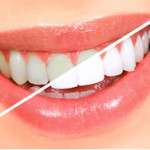Teeth Whitening
Most teeth can be whitened (some call it bleaching) and there are a number of ways to whiten teeth. External tooth whitening happens when vital teeth are bleached by direct contact with a safe and commonly used whitening agent, either in a dental office or at home. This means that in most situations, tooth whitening is possible and safe.
Fillings
Dentists no longer need to rely on unsightly metals to replace tooth structure lost to decay, but use high density, state-of-the-art plastic (composite resins) and porcelain materials instead. These materials more naturally mimic the look, feel, and function of natural teeth and actually bond directly to the remaining enamel and dentin. This means that new fillings preserve more of the natural tooth so less repair work is necessary immediately and in the future. These modern filling materials are also more natural in appearance; it’s almost impossible to tell that your tooth has a filling.
Many adults already have existing metal fillings, which do not lend themselves well to replacement with composite resins. The choice of materials is a matter of discussion between you and your dentist.
Dentures
While dentures have been considered a tried and true method for tooth replacement for years, they come with their own set of issues. The main problem is that dentures rest on teeth and gums for stability, which can encourage bone loss, tooth decay, and periodontal disease. However, dentures can be relined every few years to compensate for bone loss and any compromised facial integrity.
There have been modern advances in dentures, as there have been in many other areas of dental healthcare, and an overdenture retained by implants may be an option. Overdentures are a combination of traditional dentures and the newer science of dental implants to prevent bone loss that could result from dentures alone.
Dental Implants
Dental implants replace the roots of lost teeth. A dental implant–along with a crown built on the implant–replaces a missing tooth or teeth and helps to maintain the bone support of the adjacent teeth, extending their life span. Dental implants are considered a permanent service and can be expected, in most cases, to last many, many years. They are the optimum choice for replacing missing teeth. A tooth replaced with a dental implant should be imperceptible from a natural tooth.
Tooth Bonding
Bonding is a process where the dentist attaches or “bonds” materials directly to the tooth. Advancements in dental bonding materials, such as porcelains and composite resins, can now more accurately replicate natural tooth structure, appearance, and function. Through bonding techniques, natural tooth enamel and dentin are fused to create a strong structure that looks and reacts much like the original tooth. This procedure is an excellent solution to chipped teeth and also serves as a superior filling material over metals.
Porcelain Veneers, Crowns & Bridges
Porcelain veneers, crowns, and bridgework all share one thing: the useful and natural properties of dental porcelain.
Porcelain is often selected for esthetic reasons because of its remarkable property to mimic natural tooth structure. Today’s materials are lifelike and very durable. Ask your AACD cosmetic dentist about the dental material choices that may be used to rejuvenate your smile. In addition to being an esthetically pleasing material, porcelain is the strongest cosmetic tooth-colored material and it can withstand normal dental function.




